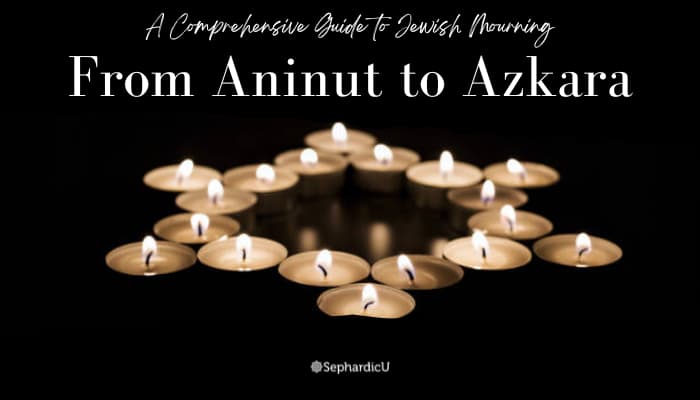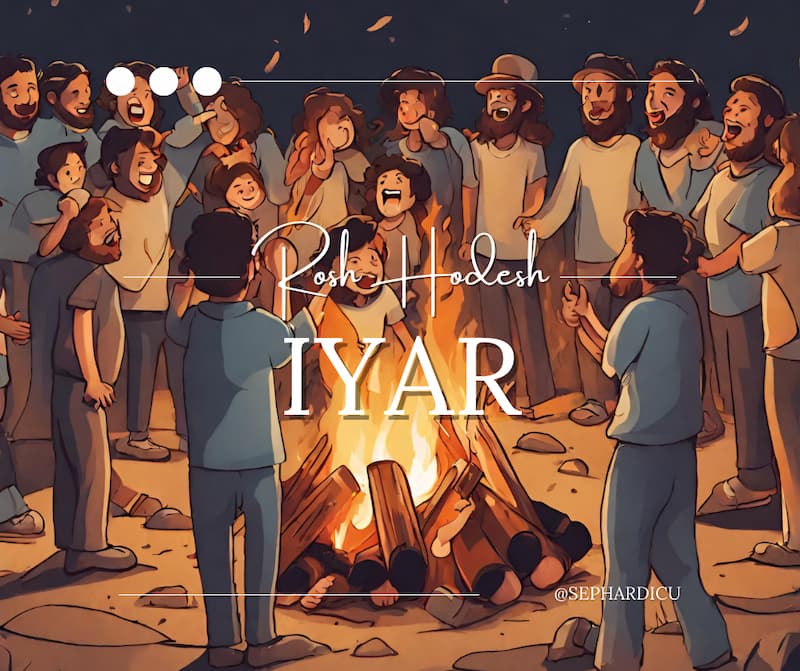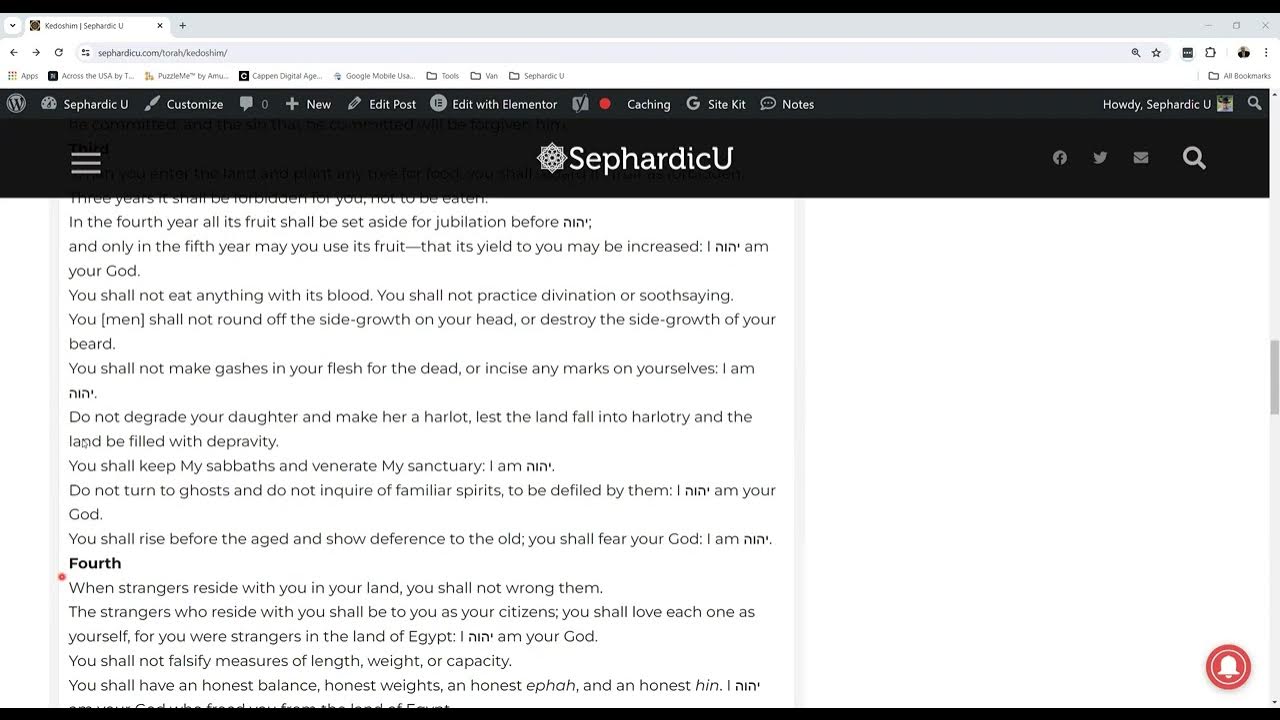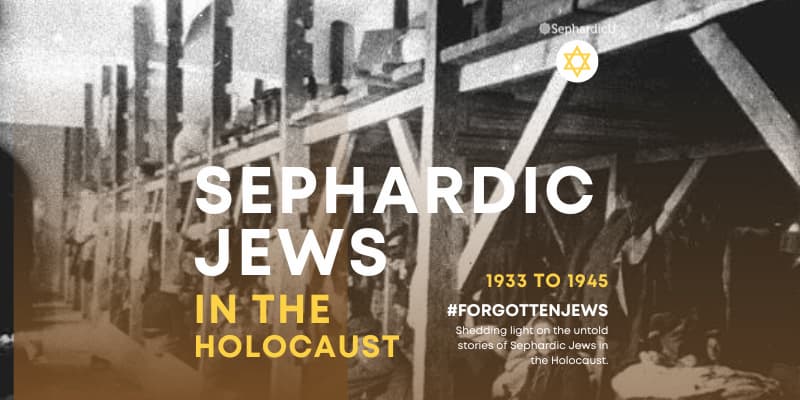Introduction
Welcome to Chapter 1 of our guide, where we explore the significance of Aninut from a Sephardic perspective. Aninut refers to the sacred phase between the moment of death and the burial of a loved one. In this chapter, we will delve into the profound emotions and important considerations that arise during this immediate phase of mourning.
Aninut is a time of intense grief, shock, and profound sadness. It is a period of raw vulnerability and immediate processing of the loss. Within the Sephardic tradition, Aninut carries specific customs and practices that guide the bereaved in honoring their loved one and navigating the complexities of mourning.
In this chapter, we will shed light on the emotional impact of the Aninut period, the practical aspects of arranging a funeral, the support and comfort offered during this sacred phase, the exemptions from joyous mitzvot, and the need for seeking guidance from knowledgeable individuals within the Sephardic community.
By embracing the Sephardic perspective on Aninut, we hope to provide you with insights, guidance, and support to navigate this sacred phase of mourning with sensitivity, respect, and comfort.
Emotional Impact of Aninut
The period of Aninut, encompassing the time between death and burial, brings forth an intense emotional impact on individuals who find themselves in this state. The initial shock and disbelief of the loss can be overwhelming as the reality begins to sink in. Emotions run deep, and a profound sense of sorrow permeates every aspect of the bereaved individual’s being.
During this time, it is crucial to recognize and acknowledge the range of emotions that may arise. Numbness and a sense of detachment from the world are common responses, as the mind struggles to comprehend the magnitude of the loss. The bereaved individual may find themselves caught in a whirlwind of conflicting emotions, swinging from confusion to anger, and from deep sadness to moments of profound longing for the departed.
It is important to create a space that allows these emotions to be expressed freely and without judgment. The grieving individual should be encouraged to share their feelings with trusted family members, close friends, and members of the community who can provide compassionate support. Engaging in open and honest conversations about the pain and sorrow experienced can be cathartic and healing.
In addition to seeking emotional support from loved ones, the bereaved may also find solace in the rituals and traditions of their faith community. Religious leaders, such as rabbis or clergy, can offer guidance, words of comfort, and spiritual support during this challenging time. Participating in religious services, prayers, and rituals specific to the mourning period can provide a sense of connection, purpose, and a space for collective mourning.
It is essential to remember that everyone grieves differently, and there is no one-size-fits-all approach to navigating the emotional impact of the Aninut status. Each individual’s grief journey is unique, and it may take time to process and come to terms with the profound loss. Patience, understanding, and a non-judgmental presence can make a significant difference in supporting someone during their Aninut period.
By embracing and validating the emotions experienced during this time and by providing a supportive network, we can help individuals in the Aninut state find solace and begin to navigate their grief journey with care and compassion.
Funeral Arrangements
During this phase, immediate family members, often with the assistance of a funeral home or burial society, navigate the logistics involved in arranging a meaningful funeral. Here are some key considerations during this time:
a. Contacting a Funeral Home:
The first step is to reach out to a local funeral home or burial society to initiate the necessary arrangements. Funeral professionals are experienced in handling the various aspects involved and can provide guidance and support during this challenging time. They will assist with tasks such as coordinating the transportation of the deceased, obtaining the required legal documentation, including the death certificate, and working closely with the officiating clergy to ensure a seamless process. When discussing the funeral arrangements, you may also inquire about any specific Sephardic customs or rituals that can be incorporated, ensuring the observance of your Sephardic traditions during this important time.
b. Involvement of the Chevra Kadisha:
The Chevra Kadisha, also known as the Holy Society or Burial Society, plays a pivotal role in ensuring the proper preparation of the deceased for burial in accordance with Sephardic customs. Comprised of dedicated individuals, often volunteers, the Chevra Kadisha performs the sacred ritual of tahara, encompassing a series of duties and procedures.
The tahara ritual involves the ritual washing and purification of the body, signifying the utmost respect and dignity accorded to the deceased in accordance with Jewish customs. The Chevra Kadisha members, trained in the proper procedures and rituals, carry out this sacred duty with profound reverence and care. They handle each step of the tahara process meticulously, upholding the principles of kavod ha-met (honoring the deceased) and tending to the physical and spiritual needs of the departed.
During the tahara, the Chevra Kadisha members respectfully wash the body, employing special soaps or cleansers as prescribed by tradition. Each step is performed with meticulous attention to detail, ensuring the utmost purity and cleanliness of the deceased. The body is then dressed in simple white burial shrouds, symbolizing humility and equality in death. Throughout the process, prayers and blessings are recited, offering spiritual comfort and solace to both the deceased and the mourners.
The involvement of the Chevra Kadisha extends beyond the physical preparations. They offer emotional support to the bereaved family during this challenging time, providing a compassionate presence and reassurance. The members of the Chevra Kadisha understand the profound grief and shock experienced by the family, and their involvement helps ease the burden of funeral preparations, allowing the family to focus on their mourning process.
By entrusting the preparations to the Chevra Kadisha, the bereaved family can find solace in knowing that their loved one is being treated with the utmost care, respect, and dignity. The involvement of the Chevra Kadisha ensures that the traditions and customs of Sephardic burial are upheld, providing comfort to the family and affirming the value of honoring the deceased according to Sephardic heritage.
c. Collaboration with Clergy:
Collaborating closely with the officiating clergy is essential in arranging a meaningful funeral service. The clergy will provide guidance and support throughout the process, working with the family to determine the order of service, select appropriate readings or prayers, and incorporate any specific customs or rituals associated with their particular Sephardic tradition. They can offer words of comfort, deliver eulogies, and lead the community in collective mourning.
By collaborating with the funeral home, the Chevra Kadisha, and the clergy, the family can navigate the intricate details involved in honoring their loved one’s memory. This collaborative effort ensures that the funeral arrangements align with Sephardic customs and values, providing a meaningful farewell and a sacred space for remembrance and grieving.
During the Aninut period, funeral arrangements can be emotionally demanding. It is important to lean on the support of trusted family members, friends, and community members, who can assist in the logistical aspects and provide much-needed emotional support during this time of profound loss.
Support and Comfort
During the period of Aninut, the support and presence of family, friends, and the community play a vital role in providing comfort to the bereaved. Here are some key points to consider:
a. Condolence Visits
Family and friends gathering around the mourning family to offer their condolences and support is a meaningful practice during Aninut. These visits provide an opportunity for loved ones to express their sympathy, share memories of the deceased, and provide a listening ear during this difficult time. The presence of caring individuals can bring solace and a sense of communal support to those in mourning.
b. Meal Coordination
Traditionally, family and friends would organize and bring meals to the mourners during Aninut. These meals, known as “Shiva meals” or “meals of consolation,” are a thoughtful gesture that helps alleviate the burden of meal preparation for the grieving family. The specific customs and practices surrounding meal coordination may vary within Sephardic communities, so it is important to consult with your community or trusted sources to determine the appropriate protocols and ways to offer support in this regard.
c. Seeking Emotional Support
In the midst of grieving during Aninut, it is essential for mourners to actively seek emotional support and guidance. Turning to loved ones, close friends, clergy, or participating in support groups can provide a valuable outlet for expressing feelings, sharing memories, and voicing concerns. Engaging in open and honest conversations about the loss and the impact it has had can aid in the healing process and provide much-needed solace during this initial phase of mourning.
By surrounding themselves with a supportive network and seeking emotional support, mourners in the Aninut period can find comfort, validation, and understanding in the midst of their grief. The collective presence and compassion of loved ones and the broader community can serve as a source of strength, offering reassurance that they are not alone in their pain and that support is readily available.
Exemptions from Joyous Mitzvot
During the period of Aninut, immediate family members are granted exemptions from certain positive commandments, known as joyous mitzvot, that typically require celebration or joy. This exemption recognizes and acknowledges the profound emotional challenges faced by mourners during this time of intense grief. The focus of Aninut is centered on funeral preparations, honoring the deceased, and coping with the immediate loss, thus allowing the bereaved family to prioritize their mourning process.
In Sephardic tradition, joyous mitzvot encompass a wide range of activities that are meant to be performed with happiness and celebration. These may include participating in festive observances, such as certain holiday rituals or lifecycle events that traditionally involve joy and merriment. However, during Aninut, the mourners’ exemption from these specific mitzvot acknowledges that their emotional state is not conducive to engaging in joyous or celebratory activities.
The exemption from joyous mitzvot recognizes the need for mourners to focus their energy and attention on funeral arrangements, grieving, and finding solace in the immediate aftermath of their loss. This period is marked by intense sadness, shock, and the overwhelming impact of the bereavement. By releasing mourners from the obligations of joyous mitzvot, Sephardic tradition offers space for mourners to prioritize their emotional well-being and adjust to their new reality.
It is important to note that the exemption from joyous mitzvot during Aninut does not mean a complete withdrawal from all religious observances or rituals. Instead, the exemption provides an understanding and recognition of the unique emotional journey that mourners are undertaking during this immediate phase of mourning. Mourners are still encouraged to engage in other essential religious practices, such as prayer, seeking solace in community support, and finding comfort in the teachings and wisdom of their faith.
By granting exemptions from joyous mitzvot during Aninut, Sephardic Jewish tradition acknowledges the nuanced and complex nature of mourning. It offers a compassionate framework that allows mourners the space and understanding to process their grief, honor the deceased, and gradually begin the healing journey. This exemption emphasizes the importance of empathy, sensitivity, and support for those experiencing the profound impact of loss during the Aninut period.
Practical Considerations
In addition to the emotional and religious aspects of Aninut, there are practical matters that require attention to ensure the smooth management of responsibilities. Here are some key considerations:
a. Notification of Family and Friends
One of the immediate tasks during Aninut is to notify extended family members, friends, and acquaintances about the passing and subsequent funeral arrangements. This responsibility can be overwhelming for the immediate family members who are already coping with the intense emotions of grief. To ease the burden, it is helpful to delegate this task to a trusted family member or close friend. This person can assist in making phone calls, sending out messages, or utilizing modern communication methods to inform the necessary individuals about the loss and provide details regarding funeral arrangements.
b. Self-Care
Amidst the whirlwind of emotions and funeral preparations, it is crucial for immediate family members to prioritize self-care. Taking breaks, seeking rest, and maintaining nourishment are vital during this emotionally demanding period. Grief can be physically and mentally exhausting, and neglecting one’s own well-being can further exacerbate the strain. It is important to allow oneself moments of respite, even if brief, to recharge and replenish energy reserves. This may involve stepping away from the responsibilities temporarily, engaging in activities that provide comfort and solace, and ensuring proper nutrition and hydration. Self-care practices can help individuals navigate through Aninut with a stronger sense of emotional resilience.
c. Practical Assistance
During Aninut, practical assistance from family, friends, and community members can be immensely valuable. Friends and neighbors may offer help with household tasks, such as grocery shopping, meal preparation, or caring for children, to alleviate the burdens placed on the mourning family. Accepting and seeking assistance when needed is not only practical but also allows loved ones to demonstrate their support and care during this challenging time.
d. Financial Considerations
Funeral costs and associated expenses may arise during Aninut. It can be helpful to consult with a funeral director or reach out to relevant organizations for guidance on financial matters, including any available assistance or resources. Exploring these options early on can provide the necessary clarity and support in managing financial considerations related to the funeral and burial.
By addressing these practical considerations, immediate family members can navigate Aninut with greater ease and focus on the essential aspects of mourning. Sharing the responsibilities of notification, prioritizing self-care, accepting practical assistance, and seeking guidance on financial matters can collectively contribute to creating an environment where the bereaved can mourn and process their grief with less overwhelming practical concerns.
Seeking Guidance
During the period of Aninut, seeking guidance from a knowledgeable rabbi or community leader can provide invaluable support to the bereaved family. These individuals possess the expertise and understanding of Sephardic Jewish funeral customs, rituals, and traditions. They can offer guidance, support, and spiritual direction to help navigate the complexities of mourning according to Sephardic practices.
Here are some ways in which seeking guidance can be beneficial during Aninut from a Sephardic perspective:
a. Funeral Customs and Arrangements
When navigating the funeral customs and arrangements within the Sephardic tradition, the guidance of a knowledgeable rabbi or community leader can be invaluable. These individuals possess a deep understanding of Sephardic customs and can offer valuable insight into the specific rituals and practices associated with Sephardic funerals.
The rabbi or community leader can provide guidance on the order of the funeral service, ensuring that it aligns with Sephardic religious and cultural expectations. They can recommend appropriate prayers or readings that hold particular significance within the Sephardic community or that are specific to the family’s customs. Their expertise ensures that the funeral proceedings honor the traditions and provide comfort and solace to the mourners.
In Sephardic burial customs, a strong emphasis is placed on simplicity and modesty. It is common to favor the use of a simple pine coffin, referred to as an aron, which reflects the Sephardic values of humility and frugality. This choice signifies the understanding that material possessions hold no significance in comparison to the eternal soul. The use of a simple aron emphasizes the equality in death and serves as a reminder of the transient nature of worldly possessions.
During the burial itself, a meaningful Sephardic custom is for everyone attending to participate in the act of placing dirt into the grave. This act symbolizes a final demonstration of respect, love, and farewell to the departed. By each person taking a shovel and contributing to the burial process, it underscores the communal support and collective responsibility in honoring the deceased. This participatory act allows mourners and attendees to actively engage in the final act of laying the deceased to rest, fostering a sense of unity and connection during this solemn moment.
By embracing Sephardic funeral customs and involving the expertise of a rabbi or community leader, the funeral arrangements can be tailored to honor the traditions and provide comfort to the bereaved. The emphasis on simplicity, the use of a humble aron, and the communal act of placing dirt into the grave all serve to uphold the core values of Sephardic burial customs and reinforce the deep respect and love for the departed.
b. Coordinating Religious Services
A knowledgeable rabbi or community leader can assist in coordinating religious services during Aninut according to Sephardic practices. They can help organize minyanim (prayer gatherings) for reciting the Mourner’s Kaddish, a prayer traditionally said by mourners. They can guide the family in selecting appropriate prayers, readings, or psalms to incorporate into the mourning rituals. Their expertise ensures that the religious aspects of Aninut are observed in accordance with Sephardic tradition.
c. Spiritual Guidance
Grieving during Aninut can bring forth deep existential questions, spiritual reflections, and a profound sense of loss. A rabbi or community leader can provide spiritual guidance and companionship during this challenging time. They can offer a listening ear, provide words of comfort and reassurance, and address any spiritual concerns or conflicts that may arise. Their presence and support can help the bereaved find meaning, purpose, and spiritual solace within the mourning process.
d. Support and Community Resources
Rabbis and community leaders often have access to a network of support services and resources that can assist the bereaved during Aninut from a Sephardic perspective. They can provide information about support groups, grief counseling, or other community resources that offer additional assistance to those navigating the grieving process. Connecting with these resources can offer further support, validation, and understanding to the mourners.
By seeking guidance from a knowledgeable rabbi or community leader familiar with Sephardic customs, the bereaved family can receive the wisdom, support, and guidance necessary to navigate the complexities of mourning during Aninut in accordance with their Sephardic heritage. Their presence ensures that the religious and spiritual dimensions of the mourning process are upheld, providing comfort, solace, and a sense of connection to the broader Sephardic Jewish community.
Conclusion
In this first chapter, we have explored the significance of Aninut, the emotional impact of the Onen status, and the practical considerations of funeral arrangements from a Sephardic perspective. Understanding and embracing the unique aspects of Aninut in Sephardic Jewish mourning practices can help individuals and families navigate this initial phase of mourning with sensitivity and respect.
As we continue our journey through the steps of bereavement, we will delve into the subsequent chapters to explore Shiva, Sheloshim, Avelut, and Azkara from a Sephardic perspective. Each chapter will provide insights, guidance, and support to honor and remember our loved ones, offering comfort and solace during the mourning process.
Chapter 2: Shiva – Embracing Solace and Support During the Mourning Period
Chapter 3: Sheloshim – Healing and Reflection in the Thirty-Day Mourning Period
Chapter 4: Avelut – Mourning Practices and Observances
Chapter 5: Azkara – Commemorating the Anniversary of the Passing
Within these chapters, we will further explore the support and comfort provided by family, friends, and the community during the mourning period. We will discuss the meaningful practice of condolence visits, where loved ones gather to offer their support and share memories of the deceased. Additionally, we will address the coordination of meals, traditionally known as “Shiva meals” or “meals of consolation,” which are organized by family and friends to alleviate the burden of meal preparation for the mourners.
May this guide be a source of strength and understanding as we navigate the phases of bereavement together, drawing upon the rich traditions and wisdom of Sephardic Jewish mourning practices.









